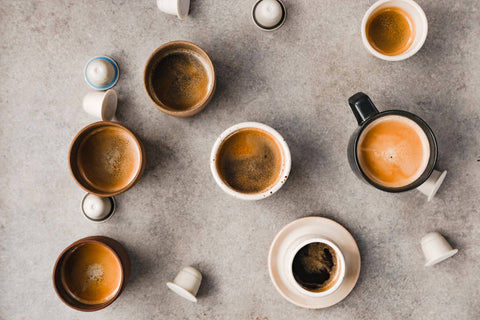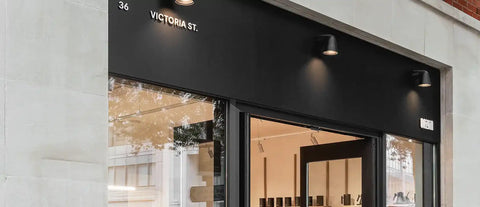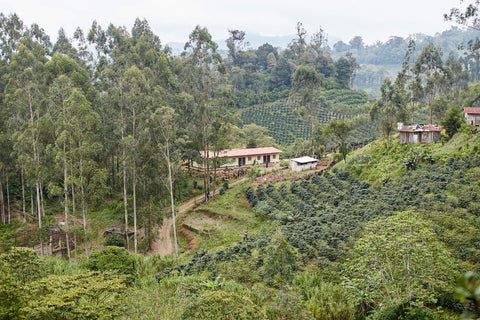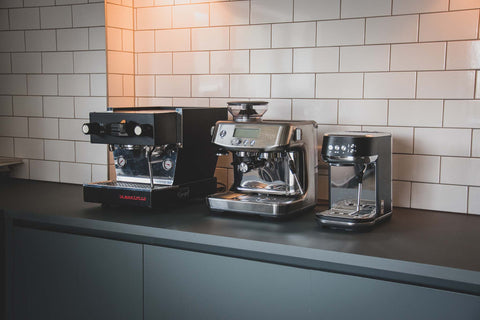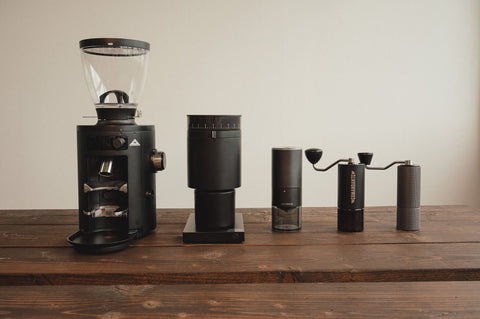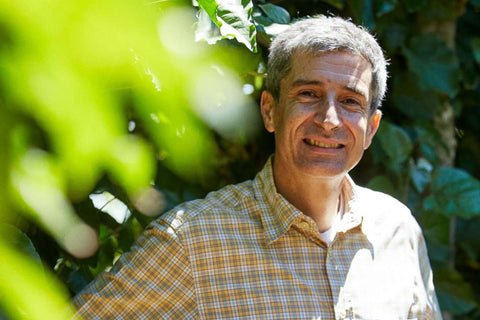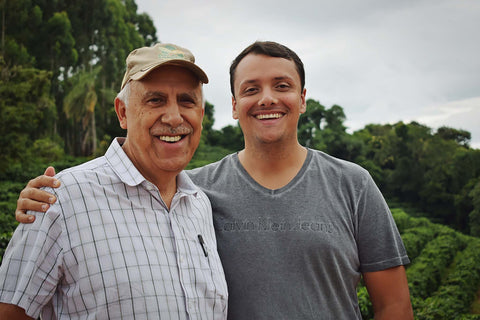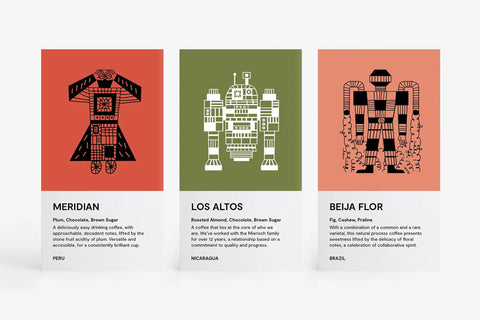Quality coffee goes hand in hand with quality relationships between roasters and producers. One of Origin’s longest-standing direct trade relationships is with the Mierisch family, a partnership that has brought about world-class coffee and opportunity.
At the beginning of the year, Origin’s Quality Control Coordinator, Callum O’Brien, travelled to Nicaragua – his first solo coffee trip – to discover the family’s farms and the people behind the incredible coffee he then helps to shape, with the rest of the roastery team, into the exceptional cup profiles on offer throughout our collection.
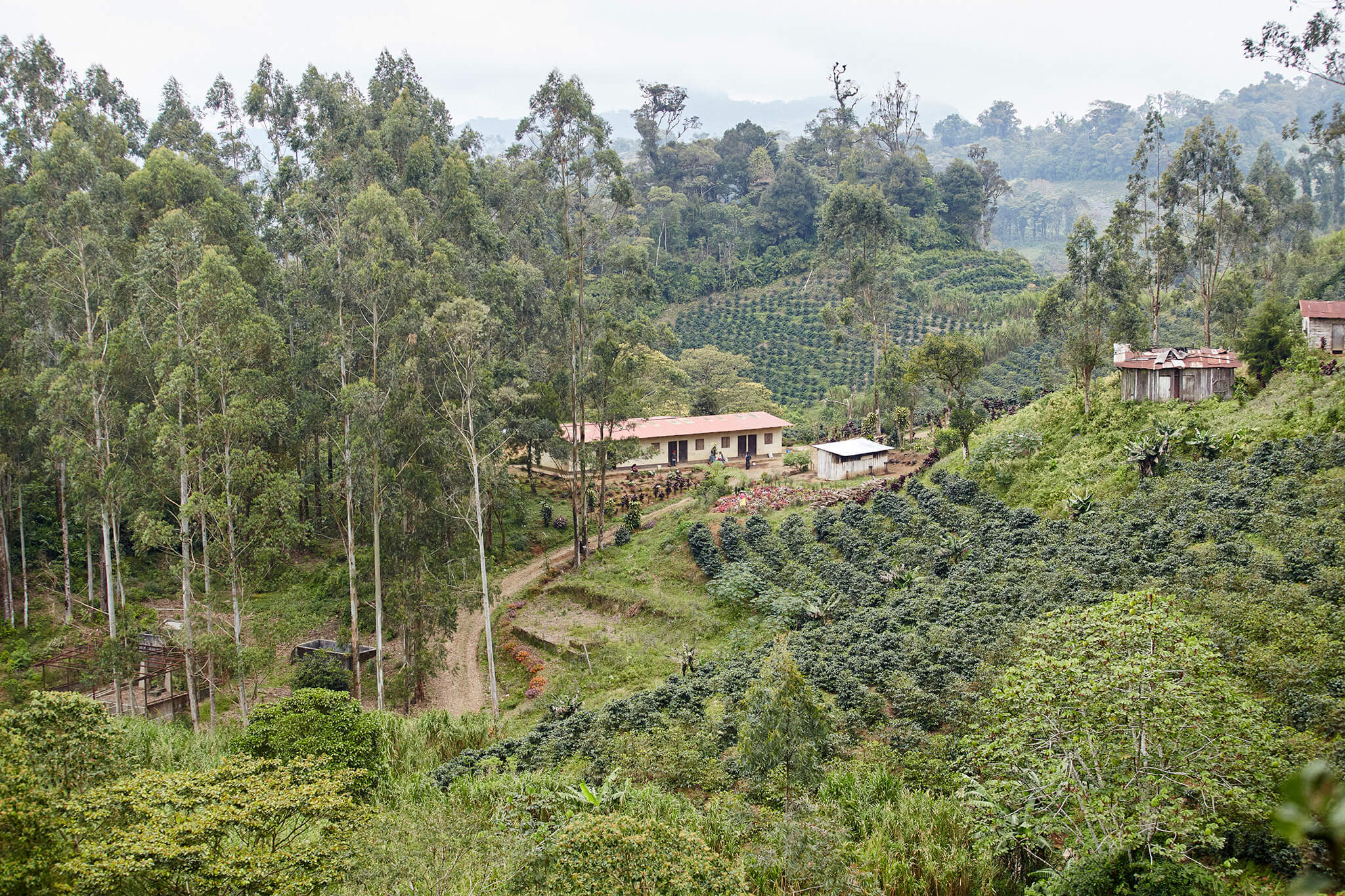
We asked Callum to talk through his experience; read on for his account of the landscape, friendships, and coffee of Nicaragua.
ON THE ROAD
“My last origin country trip was to Colombia in 2022 with Freda, accompanying her on a sourcing trip, which was an incredible eye-opening experience,” Callum explained to us during a brief moment away from the hustle of the Roastery, between the whirr of the Loring Smart Roasters, the sacks of green coffee being unloaded, and the excitement of the team enjoying their regular Friday morning cupping session. “It was my first-time visiting Nicaragua and, truthfully, I didn’t know what to expect.”
Callum’s eyes shine with enthusiasm as he recounts his experience; it’s clear this trip meant a lot to him—it’s the same look he gets whenever he talks coffee with us, an excitement that’s infectious. He first got into working in coffee through a variety of hospitality environments—finding the most enjoyment in barista roles. “I went on to work in a micro-roastery,” he told us, “And absolutely loved it. The whole process, from receiving the green coffee, to putting it through that first roast, to tasting and considering how you can, step by step, bring out the best flavour by tweaking certain parts of the roast—that’s the best for me; that’s what got me hooked.”
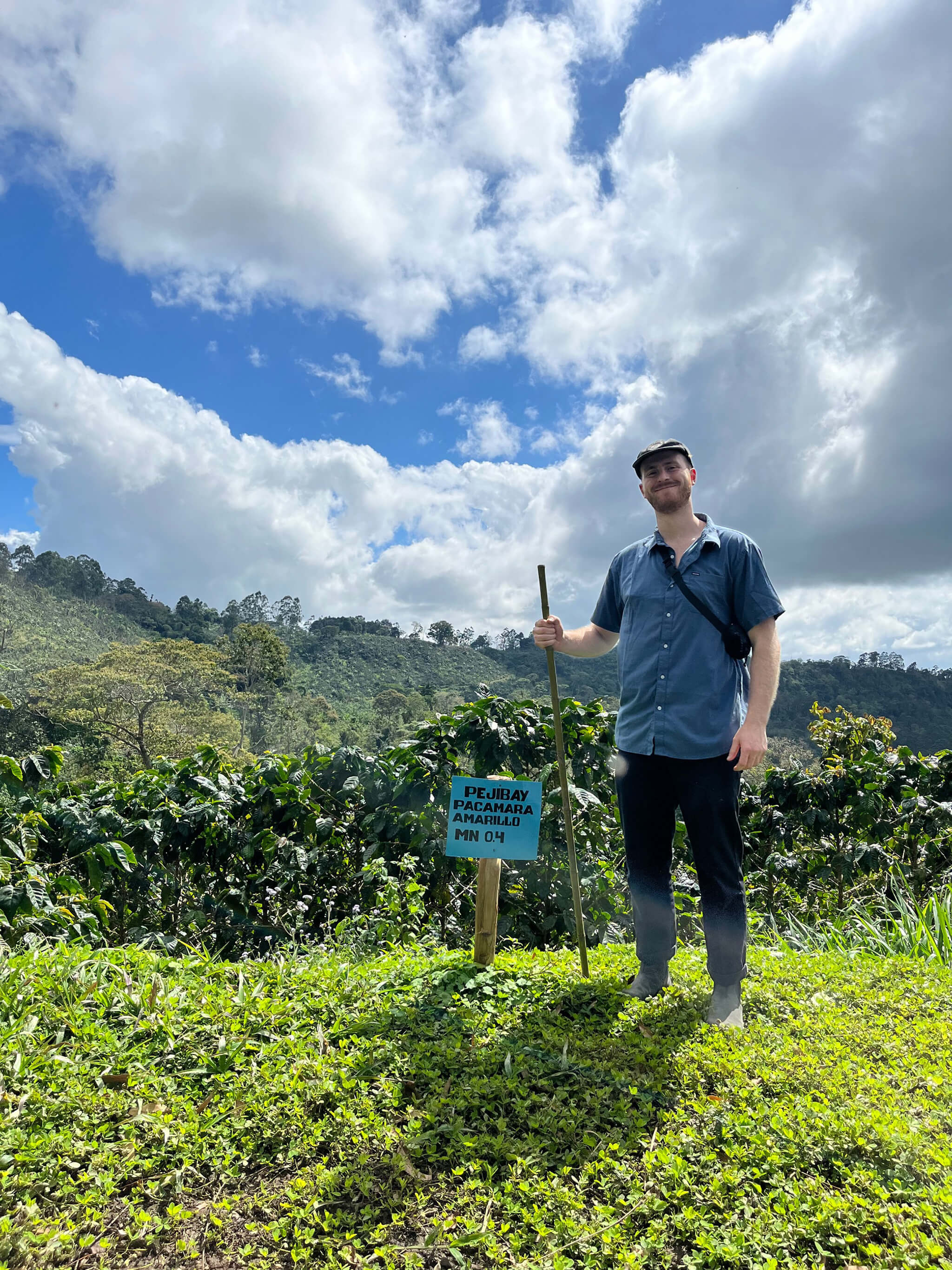
FIRST HAND EXPERIENCE
As someone who considers every careful part of the roasting process, it was only natural that Callum would be keen to travel right to the source of such incredible coffee production. “I’d always wanted to tie up the full picture of where our coffee comes from and gain clearer insight into the full process,” he said. “The trip definitely helped fill in a few holes in my coffee knowledge—being there first-hand was such a privilege, and an incredible way to further my learning and appreciation.”
While he didn’t know what to expect from the landscape, Callum did have an idea about the kinds of conversations he’d have, and the types of people he’d meet, including some friends of Origin. “I had met with Erwin [Mierisch] when he visited the Roastery last year; listening to the talk he gave was so inspiring, and I knew then that there was so much more about the coffee industry that I had yet to learn and delve into.”
And delve in he did. “I arrived and was instantly welcomed; the people are so friendly, and full of humour. It’s a beautiful country.” With a limited amount of time, Callum made the most of his trip, connecting with the people and land. Read on for his travel diary.
DAY ONE
I was met bright and early by Abraham, one of the cuppers for Finca Mierisch, and we drove two hours north, just outside of Matagalpa, to the dry mill, where all the coffee from the 11 Nicaraguan farms is brought to be dried and processed. Driving through the gates of the dry mill, I was struck by the amount of coffee being processed and the organisation of the place.
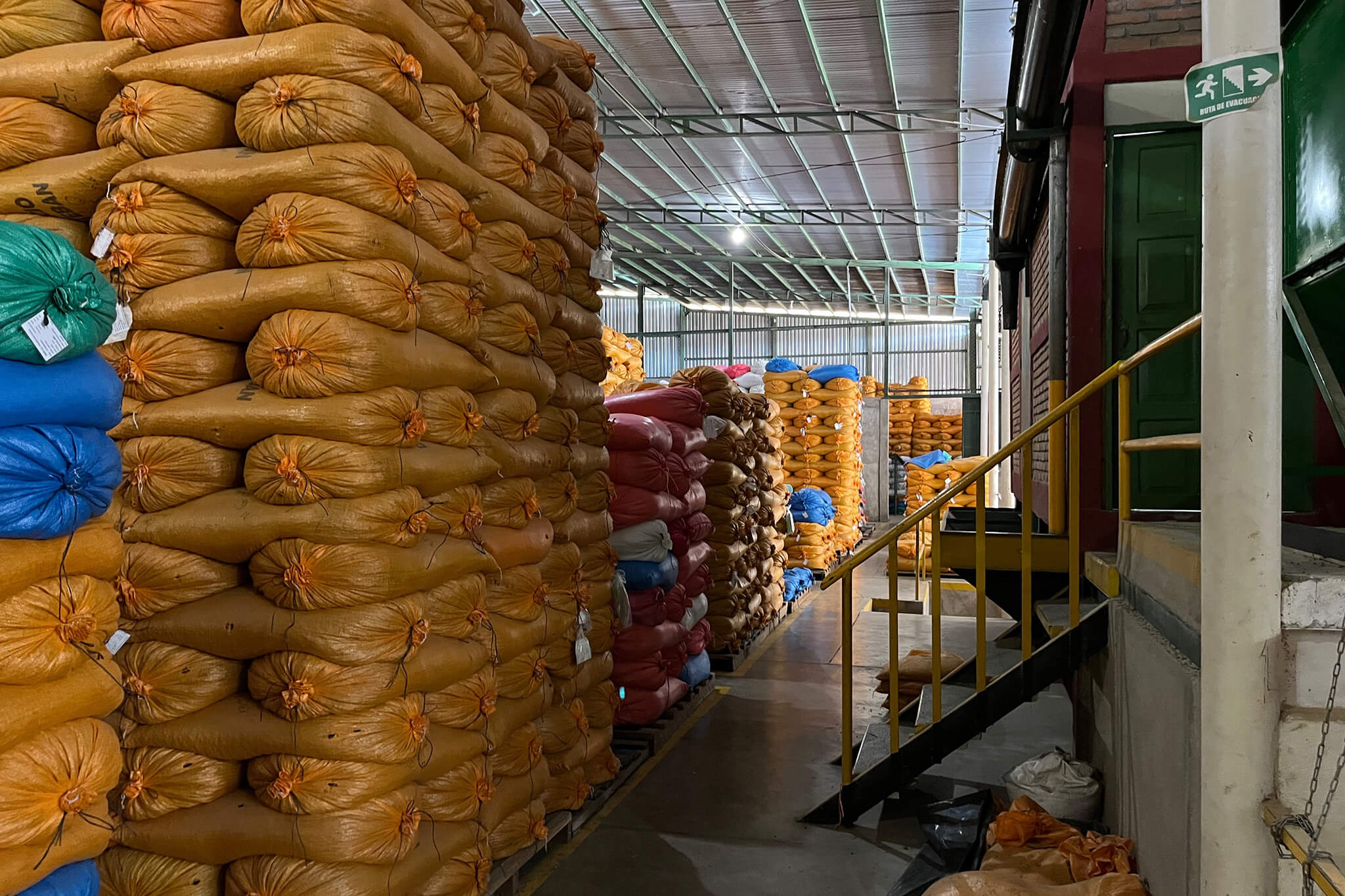
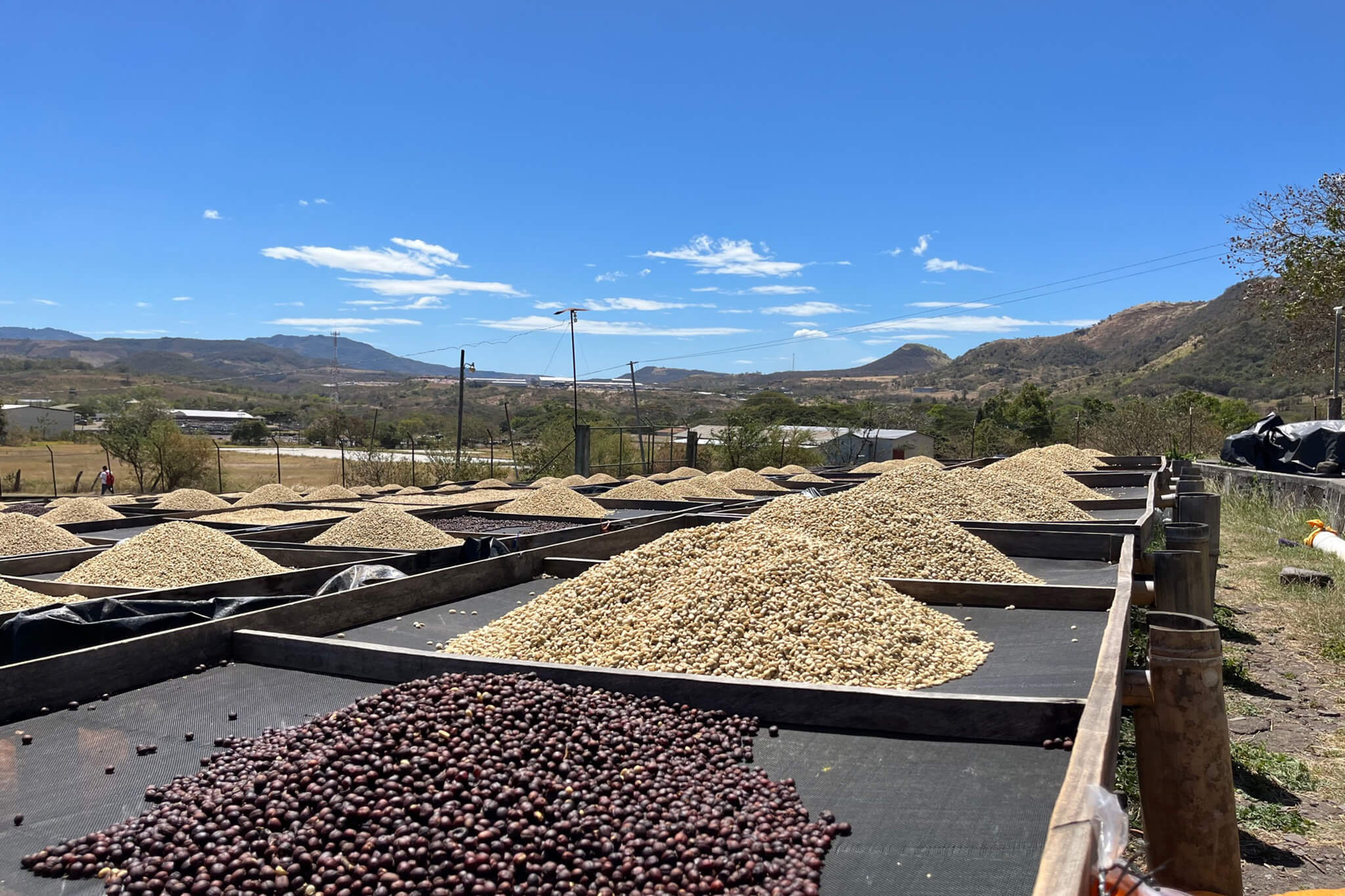
I was greeted by Erwin, who’s a fifth-generation coffee producer within the Mierisch family. After being introduced to the team I was given a tour of the facilities, shown where they receive and process coffee; the drying area outside of the dry mill; the various raised beds; and all the machinery used to process, sort, and pack the coffee. Every step of the drying process is so precise, regimented and controlled – whether that be drying times, storage temperatures, airflow onto the raised beds – everything is recorded and tracked as it flows through each stage at the dry mill. Within the warehouse, coffee sacks towered above me, stacked almost to the roof, and the sound of heavy machinery filled the room as Erwin explained to me how every step of the traditional drying process has been considered. Drying coffee on traditional patio or concrete, for example, has been replaced with drying on breathable, tarp-like material laid upon grass and excess coffee parchment, allowing better airflow and a more even drying process. It’s small changes like this that make a big difference in overall quality and consistency.
Following the dry mill tour, we headed for Las Placeres, one of the family’s most productive farms—and one that has been in the family since 1922. Driving past the busy and compact city of Matagalpa, we headed up winding roads to the farm. Despite the relatively low altitude of 840-970 masl, the farm feels quite high up. While much of the farm had already been harvested, the scale of the lines of coffee trees and range of varietals on show was impressive.
Las Placeres has acted as the starting point for all ecological practices that have then been across the rest of the family’s farms. The farm has been planted with eucalyptus, yucca, guava, and avocado plants lining the paths between the coffee crops, creating shade as well as providing food for those who work on the farm. Here I was taught about grafting, a process where two trees are combined shortly after propagation: this is done by slicing above the roots of one varietal, then attaching to the top half of a sliced other varietal to combine the two plants. The process creates coffee trees with stronger resilience to frost, and sturdier trunks to withstand wind damage, and has been used for almost all the coffee trees across the Mierisch farms; in the nursery, around 120,000 freshly grafted, infant Ethiosar trees were ready to be planted next season.
DAY TWO
Erwin’s grandfather, ‘Doc’ Mierisch, joined us to visit Finca Limoncillo, his favourite of the farms: it’s easy to see why. Beyond the rows of coffee at the top of the farm, rolling hills, tropical forests, and distant mountains lined the view. Walking down through the farm, past waterfalls, beautifully kept coffee plots merge seamlessly into the forest. Numerous varietals thrive on the farm, including Javanica Red, Yellow Pacamara, Red Catuai, and Red Bourbon; it was particularly interesting seeing how each varietal had different characteristics and requirements for growth.
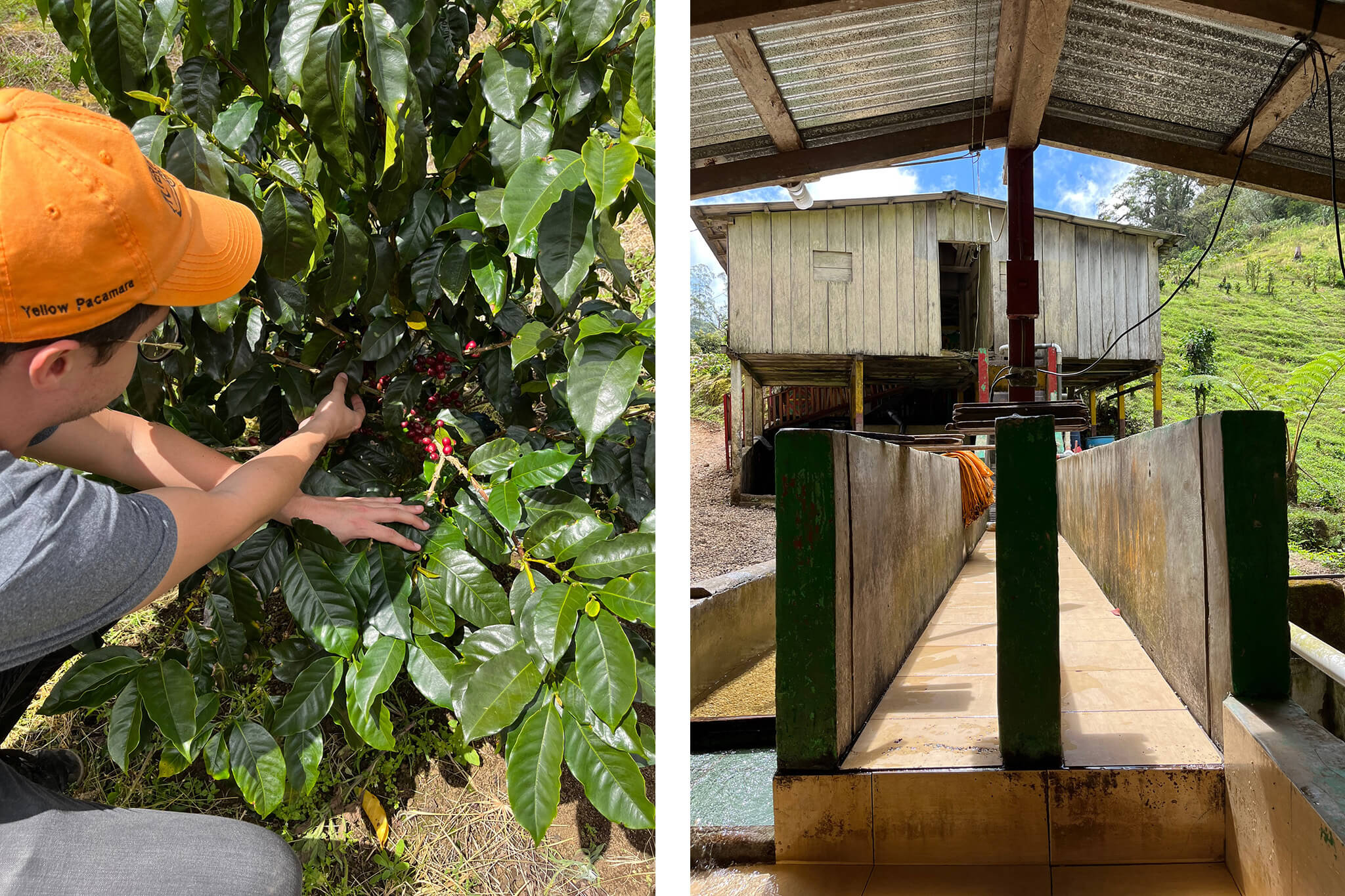
Erwin explained that they had been experimenting with tree placement and pruning techniques, in order to enhance cup quality and consistent high production. It was impressive to see such clear evidence of how, even after so many years of producing coffee, the family were still looking for way to improve, unafraid to try new things.
We returned to the dry mill and lab, greeted by the smell of freshly roasted coffee, and I was able to play around on the 1kg sample roaster—a fun challenge after becoming accustomed to the roasters we use in the Origin Roastery. Every coffee processed, graded, and sorted, is sample roasted on site, meaning that Erwin and the cupping team often cup over 100 coffees during the peak of harvest, an incredible amount to taste. We cupped the upcoming Los Altos crop, alongside some of our future feature coffee releases which was really interesting—extremely fresh in comparison to the more mature coffee I had been used to sampling.
DAY THREE
After a quick stop at the QC lab for a coffee, we headed to Los Altos and La Huella to see the home of some of the classic coffees I had become so familiar with roasting and drinking back home. Despite the farms merging together, sharing the same wet mill and worker facilities, they felt distinctly different. Erwin’s grandmother has planted hundreds of flowers that line the road though the lots, making it a bright, colourful, and amazing place.
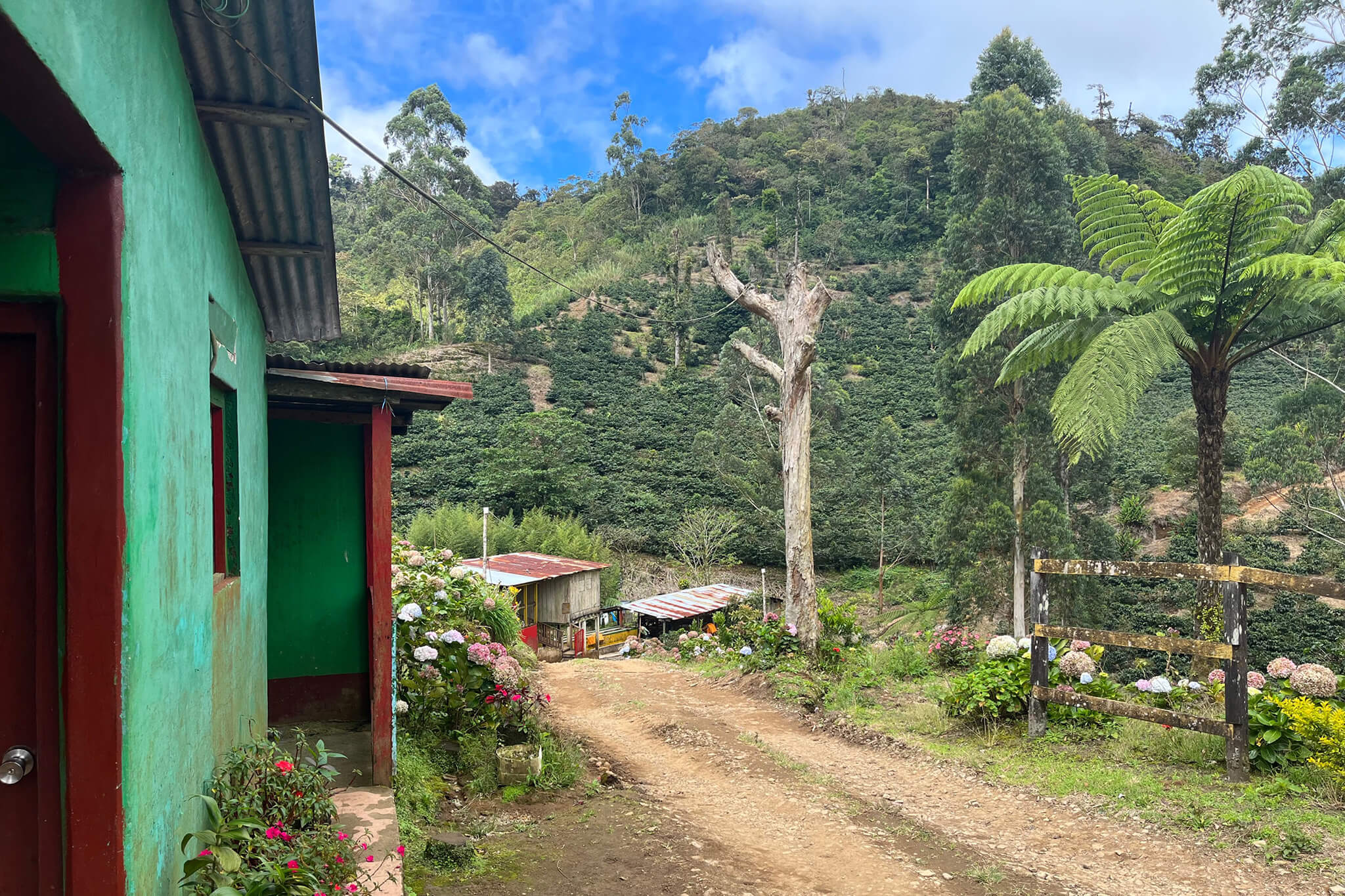
We went through La Huella first, tasting ripe Yellow Pacamara cherries, which were delicious: sweet, floral and banana-like. The farm felt open and bright with less shade coverage than Las Placeres and Limoncello, which benefits the Pacamara varietal.
The farm is also home to pristine rows of Gesha trees, planted 60cm apart, with 2m between each row. Gesha trees are traditionally planted compactly, as they can suffer when exposed to wind. However, thanks to a Robusta grafted root system, the Mierisch family have been able to plant them farther apart, allowing the trees to absorb more sunlight, improving the cup taste and yield.
We crossed over into Los Altos then, meeting the pickers harvesting the Red Catuai cherries that form one of our most loved Mainstay coffees. With its steep terrain amid gently sloping hills, it’s another beautiful plot. Walking around the farm, Erwin explained that Nicaragua is experiencing changes to its traditional weather cycle, including cooler temperatures, wind, and rain showers in what is normally considered the hot season. These unexpected conditions provide challenges for the producers, causing coffee buds to flower prematurely and out of season, and making it harder to monitor and ensure the coffee dries outside on patios or raised beds.
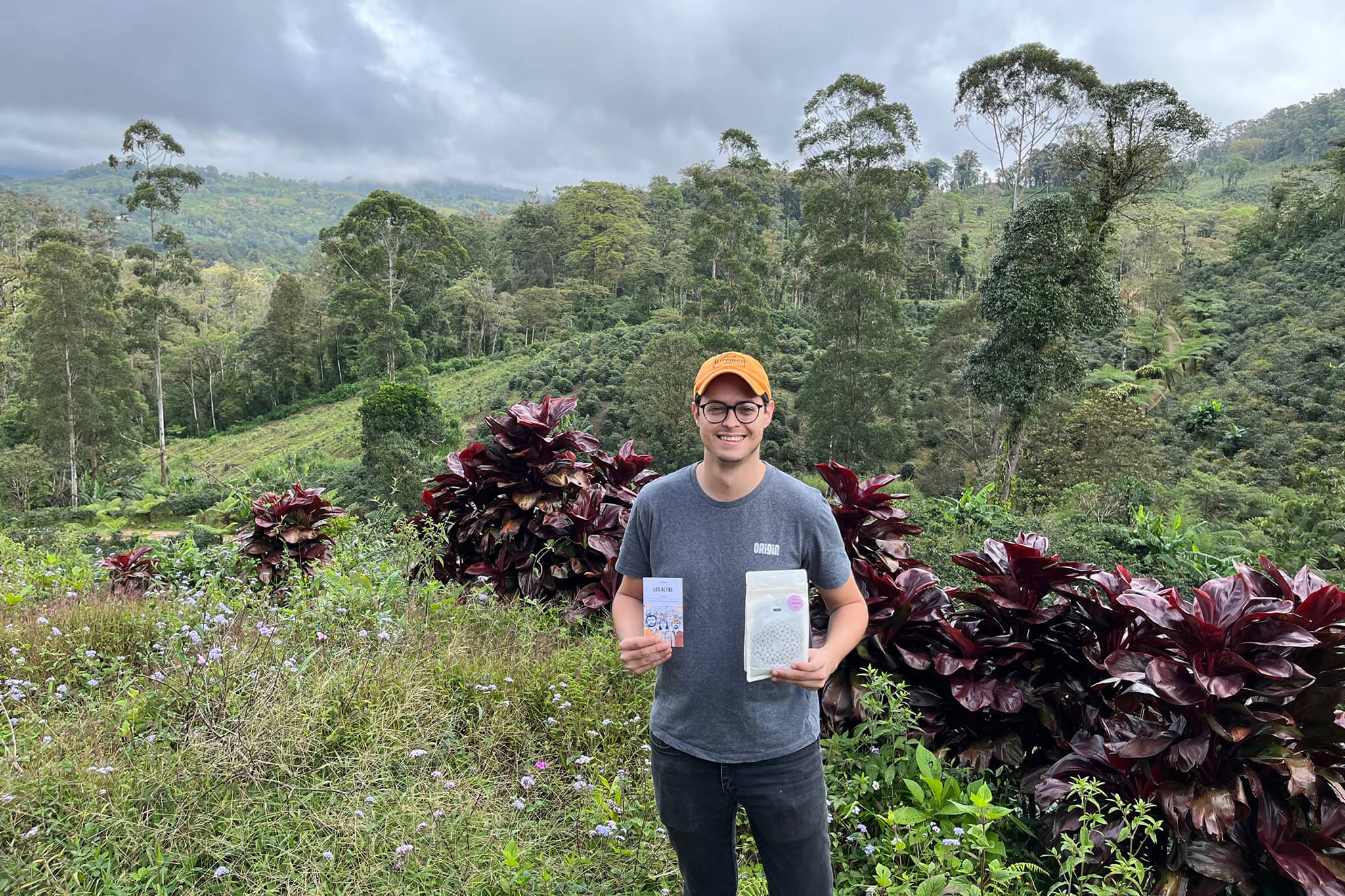
DAY FOUR
On my final day, we headed to San Jose, via La Escondia, in the Jinotega province. Sitting at 1,250-1,400 masl, this farm boasts the highest altitude of those I visited.
La Escondia sits at the bottom of the mountain. Sourcing water can be a logistical issue, with these farms located far away from natural resources—meaning the discovery of a spring at La Escondia has been well received, and already being considered to integrate into the land. The farm is where the Mierisch family trial new coffee varietals, before bringing them to their other farms: each row had a different varietal growing, creating a catalogue of coffee trees to road test.
The trip further up the mountain to San Jose was a special one for me; it was from this farm that I experienced one of my very first Gesha coffees. The views from San Jose were incredible, with the land more open and less shaded, looking over a massive lake. Pickers were hard at work here: every coffee cherry, at each of Mierisch family’s farms, is handpicked.
Finally, we headed back to the QC lab to cup some of the coffees that the family planned to enter into the Nicaraguan Cup of Excellence. It was really interesting to try the full, diverse range of coffees which were on offer, sampling coffees that challenged the traditional taste profile of Nicaraguan coffee.
REFLECTIONS
Everyone working for Finca Mierisch is refreshingly transparent: Erwin, Doc and all the employees were so willing to explain everything to me firstly, but also to share their knowledge and experience with other producers and coffee professionals in order to raise the standard of coffee around them. Finca Mierisch has been around since 1908 and it’s clear that it’s still evolving and improving: the amount of care, thought and hard work which has seeped through to every inch of the farms and operation is impossible to ignore, and incredibly inspiring.
I can’t thank Erwin and ‘Doc’, and all the members of staff around Finca Mierisch for hosting me on this trip: I had an amazing time and learnt so much.
--
Try Nicaraguan coffee for yourself, shop our latest range here
